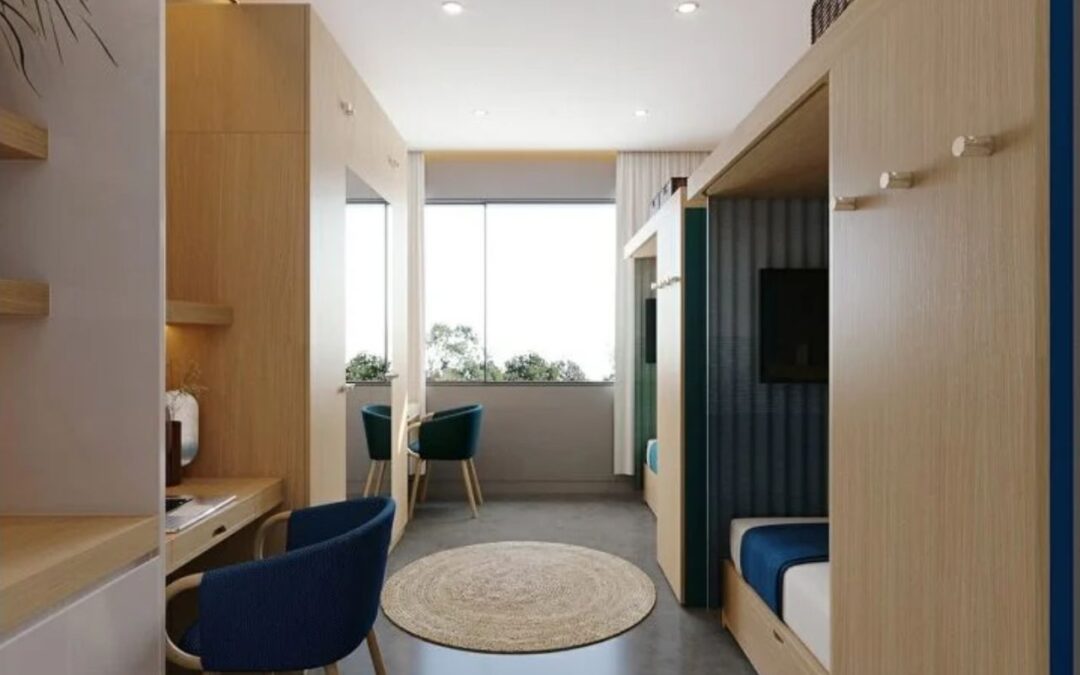Over the past several years, the real estate landscape in India has undergone numerous transformations but none as dynamic and far-reaching as the rise of urban co-living. From Indore to Bangalore, the country is seeing a demographic and structural shift in living preferences. The Indian co-living market is projected to grow at a CAGR of 17% and the growth has resulted in a market size of nearly 40 million thus far. With nearly 0.3 million beds already in place and market share projected to double from 5% to 10% within just five years, the co-living movement is rapidly gaining ground and redefining how young India chooses to live. Let’s take a closer look at the cities leading this bold new chapter in urban living.
1. Bangalore, Karnataka
The co-living market in Bengaluru is experiencing rapid growth, with reports indicating a near 30% CAGR since the pandemic. The city’s dynamic tech ecosystem attracts a vast influx of young professionals and the fresh culture and moderate climate further enhance its appeal to the co-living demographic. Co-living spaces here range from budget-friendly shared apartments to premium accommodations with amenities like co-working spaces and fitness centers. Many of these are strategically located near IT hubs such as Koramangala and Electronic City, offering convenient access to workplaces.. Areas like Koramangala, HSR Layout and Whitefield are packed with co-living spaces ranging between ₹9,000 and ₹22,000/month, which is often 20–30% lower than standard studio apartments. The flexibility, sense of community, and proximity to IT hubs make Bengaluru the epicenter of co-living innovation.
2. Hyderabad, Telangana
Hyderabad’s co-living sector is expanding at nearly 21%, thanks to its fast-growing IT ecosystem, relatively lower rental prices and strong infrastructure. Co-living accommodations average between ₹8,000 to ₹18,000/month, while 1BHK rentals go up to ₹25,000. Key demand centers like Gachibowli, Madhapur and Kondapur are seeing a surge in supply due to the steady migration of young professionals and students. Hyderabad stands out as a city where affordability meets opportunity.
3. Pune, Maharashtra
With a CAGR of nearly 17% and growing, Pune’s co-living market is thriving thanks to its dual status as a top educational and IT hub. With average co-living rents between ₹9,500 and ₹16,000/month, it offers a more affordable lifestyle compared to larger metros. Localities like Hinjewadi, Baner and Kharadi are seeing rapid growth. Demand is fueled by students from top universities and tech professionals working in the city’s numerous IT parks. Co-living spaces in Pune offer a range of amenities and are strategically located near educational institutions and IT parks, making them an attractive choice for the city’s young working population.
Also read: Dwarka Expressway Is Transforming NCR Real Estate – Here’s What You Didn’t Know!
4. Mumbai, Maharashtra
Mumbai’s co-living market has grown by 15-16% over the past few years, propelled by the city’s status as a financial hub and the influx of young professionals seeking affordable housing solutions. Operators are expanding their footprint, offering a range of options from budget-friendly shared accommodations to premium co-living spaces with hotel-like amenities. Areas like Mahalakshmi, Juhu and Navi Mumbai are witnessing significant co-living developments. Co-living offers an affordable alternative in a city where even modest apartments cost upwards of ₹35,000. In contrast, co-living spaces range from ₹10,000 to ₹25,000/month, depending on the location and amenities.
5. Chennai, Tamil Nadu
Chennai has seen strong double-digit growth in co-living in the last two years and is the only metro that is cheaper in co-living averages than Tier-2 cities, which are said to host the cheapest rates in the co-living domain in India. Co-living in Chennai averages around ₹8,000 to ₹17,000/month and often 25–30% cheaper than standalone apartments. Growth hotspots include OMR, Guindy and Velachery, which are close to IT corridors and engineering colleges. The city’s lower living costs and increasing startup presence are accelerating co-living adoption.
6. Indore, Madhya Pradesh
Though a Tier-2 city, Indore is showing the fastest emerging growth curve in co-living, particularly as a Smart City and education hub. With living costs considerably lower and co-living rents even lower than those, often ₹5,000 to ₹12,000/month and multiple B-schools and ITSEZs being developed, demand is climbing steadily. Builders are eyeing prime zones like Vijay Nagar and Rau to meet the rise in young professional and student migration
7. Delhi NCR
Delhi NCR, especially Gurgaon, is witnessing nearly 17% CAGR in co-living development, driven by corporate parks, high migration and rising cost of individual rentals. Gurgaon stands out due to its proximity to corporate hubs like Cyber City and Golf Course Road. Average co-living rents here range from ₹10,000 to ₹20,000/month, compared to ₹25,000+ for regular 1BHKs. Gurgaon’s young and mobile workforce increasingly prefers fully-managed, serviced co-living setups so the demand rising is just the beginning.
Written by Teertha Ravi





